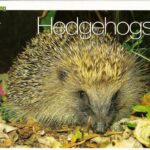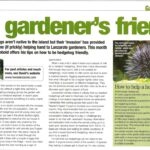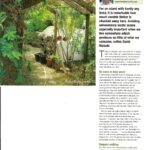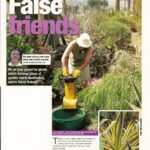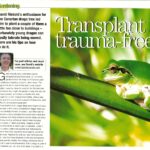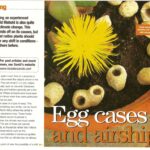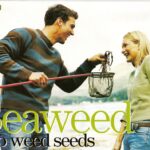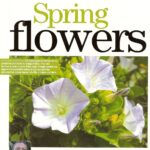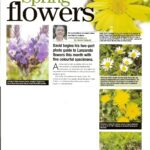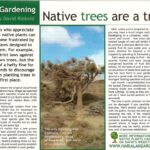Garden
INTRODUCTION
Why grow native plants?
Further reading
FLOWERS
Aeonium species
Asparagus species
Convolvulus species
Caralluma burchardii
Asteriscus species
Limonium species
Lavandula species
Campylanthus salsoloides Roth
TRESS
Phoenix canariensis
Pistacia lentiscus
Dracaena draco
ANIMALS
Frogs
Birds
Reptiles
Visiting Fauna
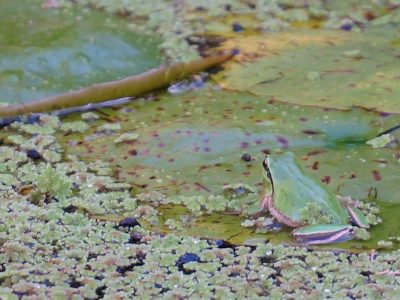

Introduction
The first plantings here were of exotic drought tolerant trees as part of the Garden Organic (formerly HDRA) Drought Defeaters’ programme. Most of these have gradually been replaced by native species. The advantages of local plants was first pointed out by Gus Hutchinson, the award-winning wildlife gardener, who was himself inspired by Dr. David Bramwell, the Canaries’ foremost botanist.

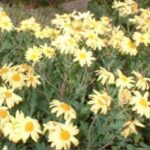
CLICK HERE TO ACCESS A COLLECTION OF DAVID’S articles about wildlife gardening and more…
Why grow native plants ?
- They are so easy to grow! Having evolved over millions of years to suit local conditions they can tolerate Lanzarote’s wind, heat and aridity better than most imported alternatives. While neighbours struggle to keep their roses alive this garden blossoms and stays green throughout the year with minimal care.
- They are beautiful! Planted in a garden, protected from goats, Lanzarote’s native plants can develop far beyond the stunted specimens found in the wild, into the most spectacular forms.
- They have medicinal properties. The Canarian people have a long tradition of herbal medicine based on their unique plants.
- They are a source of potentially valuable genetic material. The limited genetic variety of modern food crops has often required plant breeders to find wild relatives whose genes can resist disease. Perhaps the acebuche, Lanzarote’s rare relative of the cultivated olive might one day prove valuable in this way.
- They are the basis of a unique ecosystem. Every species of plant provides food and habitat for a variety of insects, birds etc. As well as such obviously associated species, a single species of tree may be the sole host to a variety of micro-organisms living in the soil around the roots. As tree species become extinct so do associated fungal species – possible sources of new antibiotics are lost before they have even been investigated.
Further reading
The following photos show just some of the Lanzarote species which grow in the garden. Anyone interested in the native plants of Lanzarote is referred to the definitive “Guia visual de la flora vascular de la reserva de la biosfera de Lanzarote” produced by the Cabildo de Lanzarote or any of the several books by David Bramwell’.
flowers
Aeonium species
Plants from the Crassulaceae family are common in the Canaries. Unique to Lanzarote is the rose house-leek (Aeonium lancerottense) the flowers of which dominate the garden for a month, normally from late June onwards. Small specimens grow in the lava of La Geria – a quite unearthly landscape when they bloom. In this garden they flourish – dozens of tiny pink and white star shaped flowers, each lovely on its own, grouped together into large conical spikes.


Also well represented in the garden is the closely related, yellow flowered, Aeonium balsimaferum, native to Fuerteventura as well as here but very rare because the goats like to eat it.



Asparagus species
Conditions here might well favour the co-evolution of plants which flower at different times, so that the pollinating insects get a steady supply of food – it certainly seems that there is always something flowering in the garden; when the Aeonium blooms start to fade these attractive white flowers appear. Two native species of the asparagus family are present in the garden. Asparagus nesiotes (pictured) is very well established. Asparagus arborescens, though less delicate in appearance, doesn’t seem to grow as vigorously.
Convolvulus species
Bindweed, the gardener’s enemy, has evolved into some unique Canarian species. Relatively recently discovered on the Risco de Famara in Haría is the rare purple-flowered creeper Convolvulus lopezsocasi (red-list protected). This flourishes in several parts of the garden. Although much less rare (endemic in all the Canary Islands), Convolvulus floridus makes an equally stunning impact in the garden. This species forms a shrub growing up to 3 metres high.


Asteriscus species
Several representatives of this family grow in the garden. One is the very rare (red-listed) Asteriscus schultzii. A far more common species, unprotected but with an equally lovely flower, is Asteriscus intermedius, which locals have traditionally used to de-flea their dogs


Caralluma burchardii
This rare subspecies is unique to Lanzarote and Fuerteventura. Careful use of seeds and shoots from a single original specimen has resulted in 100s of individuals two decades later! The small velvety-textured purple flower produces pairs of ‘devil horns’ seed pods 7-15 cm long.


Limonium species
Two of Lanzarote’s three red-listed ‘siempreviva’ species are well-established in the garden. Pictured below is the Limonium bourgeau, the tallest of the three.


Lavandula species
Both of Lanzarote’s native lavender plants are well-established in the garden. Neither smell much like their more northernly cousins, but the leaves of the one pictured can be used to make a pleasant-tasting infusion.
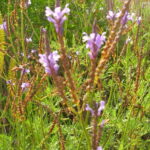

Campylanthus salsoloides Roth
Although locally called romero marino (sea rosemary) this lovely local plant is unrelated. Several were planted but only this one flourishes.

Tress
The garden once formed part of an ancient palmeral. The guanche people of Haría greatly appreciated the Canarian palm using it for everything from housing to clothing and by feeding the fronds to goats, whose manure was used for cultivation, food.

Pistacia lentiscus
David’s project to restore the cloud forest to the cliffs above Haría involves two main native species: the local wild olive, acebuche, as well as the lentiscus. Both species struggled to grow beyond a metre or so until a windbreak of the hardy Tamarix canariensis had developed.

Dracaena draco
Although not native to Lanzarote, we love the drago tree and have probably planted too many of them! We normally never water the garden but the tree below was recently transplanted and needed a helping hand.

Animals
Frogs
Two of these frog photos feature native plants not pictured above: a white-flowered Echium decaisnei known as tajinaste – a shrub which helps keep the garden green even in the driest months, and a giant dandelion. two species of sonchus produce their characteristic yellow flower after rain. Only a stick remains in the summer but these re-grow each year getting up to 2m tall. Canarian tree frogs are, for half the year, the most audible feature of the garden at night. Their annual party seems to get a bit longer each season, but by August most of the adults have left their tiny offspring in the pond and climbed to the top of the palms from where they exchange occasional croaks.



Birds
Our trees and water attract a lot of migratory birds, swallows always call in for a couple of weeks on the way to and from Africa, while the heron, shown above, managed to scoff a large number of frogs in a short time, at least they were quiet for some time after the visit. Lanzarote’s sub-species of blue tit are resident here, having nested in this garden every year for a decade. More recent residents are some shrikes which are getting quite tame (They look cute and cuddly until you observe the dagger at the end of the beak). These lack the large claws of other birds of prey and so use thorns or barbed wire to hold their lizard prey while they eat, sometimes impaling surplus on a suitable spike for later consumption. Since 2011 the Long-eared Owl has been breeding with success in the area and can be seen below on a hot day in 2017 resting in an area of succulents in the garden.




Reptiles
Two species of lizard and a gecko are permanent residents, the first two are hard to miss in the garden, and will quickly learn to eat from your hand if presented with a bit of cheese rind. Geckos can often be spotted lurking around an outside light waiting for moths, unlike lizards these reptiles can make a squeaking noise, which has occasionally puzzled our guests. The larger species of lizard (Lagarto de Haría) features attractive turquoise spots on its side. Though by no means unique to Haria (or even Lanzarote) our policy of discouraging cats means that a visitor can get very close to these lizards,and with a bit of patience they can get tame enough to get fed by hand. The photo is by our friend and long-term guest Guillermo Rodriguez (www.guillermorodriguez.com). We avoid use of insecticides and rely on our geckos to control fly and mosquito populations.




Visiting Fauna
Every now and again some visitors from Africa get blown over to Lanzarote – locusts have sometimes descended – in 2004 a large swarm of locusts arrived on the island. Fortunately they were too exhausted to do much damage. Most of them tried to seek the warmth of the black tarmac roads with predictably fatal results. Some specimens were collected for my science classes and one was borrowed by our colleague Linda Sabbage in the art department and resulted in this lovely drawing.
I have also witnessed thousands of lovely butterflies some years and in January 2002 the island was covered in the dragonflies shown in the photo.

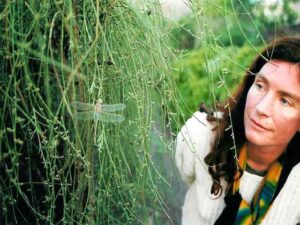
ARTICLES

















